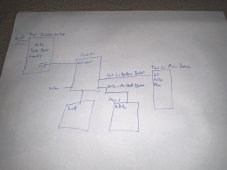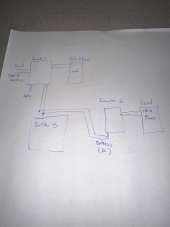Jeff in CA
New Member
I have a new 12kw solar system on microinverters, and 200A grid service. I’m converting my gas apploances to electric and adding loads via remodeling projects. In approaching my local utility, upgrading to 400A service will likely run $15k, which seems outrageous. I’m wondering if I can reallocate that capital to a battery system that both serves as backup during an outage and complements grid power to handle higher peak loads.
Requirements:
1. Couples to Solar via AC
2. Acts as a backup when the grid goes down
3. Uses solar and/or batteries to provide additional power when my load exceeds 200A
4. When generating excess solar, charges batteries with only the excess power, preventing drawing from the grid
5. Prefers using solar, then battery power during peak times to avoid drawing from the grid
I’m looking at a Sol Ark 15k. Its max output is 200A, but if it’s possible to parallelize with grid power (via AC coupling) into a 400A panel, could that work in theory somehow? Would need to get the unit a signal on grid draw and solar generation but perhaps complementing with a charge controller could do that. Would Victron units be more flexible for my goals? Are all 5 goals achievable at the same time?
Thanks,
Jeff
Requirements:
1. Couples to Solar via AC
2. Acts as a backup when the grid goes down
3. Uses solar and/or batteries to provide additional power when my load exceeds 200A
4. When generating excess solar, charges batteries with only the excess power, preventing drawing from the grid
5. Prefers using solar, then battery power during peak times to avoid drawing from the grid
I’m looking at a Sol Ark 15k. Its max output is 200A, but if it’s possible to parallelize with grid power (via AC coupling) into a 400A panel, could that work in theory somehow? Would need to get the unit a signal on grid draw and solar generation but perhaps complementing with a charge controller could do that. Would Victron units be more flexible for my goals? Are all 5 goals achievable at the same time?
Thanks,
Jeff





